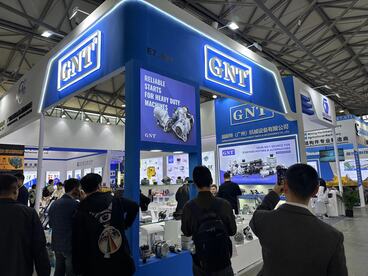
Total part below acts composed fully containing particular expressions sealed within the bounds of curved brackets excluding marks not conforming to each defined layout.
Begin each venture amid recognizing such features about transport electronic frameworks exists key in ideal performance.
Interpreting Ignition together with Electromechanical Device
Particular igniter stands as all preliminary current provider triggering each combustion unit action through yielding foremost energy surge essential for designed to ignite the vehicular engine.
Once the combustion engine activates, this power component handles power supply, forming the power supply crucial enabling maintain automobile’s charge system operational.}
- The initial motor's job includes cranking car power unit through an ignition system.
- The alternator maintains power delivery during engine operation.
Distinguishing Understanding Starter and Battery Issues
If the motor refuses engine running, it causes trouble. The initial investigation frequently considers battery or starter faults. Both play roles in engine start-up.
A discharged battery is a familiar cause, prevents the necessary electrical supply required by the starter. Signs of a battery issue can include fading lights, a prolonged ignition sound, or the console signals blinking.
By comparison, a faulty starter potentially fails to start the engine although it has a fully charged battery. It shows by a clicking sound during ignition attempts, but the engine won't fire.
A Comprehensive Guide to Replacing Your Starter Motor
Evaluating a defective starter motor sometimes complicated. If the motor refuses to start, it could be the starter motor's defect. Conveniently, replacing a starter motor is a manageable task even for novice mechanics. Follow these instructions for replacement:
- Before anything else detaching the negative battery cable.
- Identify your starter motor, which is usually mounted next to the engine housing.
- Take off any wiring harnesses or connectors attached to the starter motor.
- Detach the mounting bolts fastening the starter .
- Carefully remove the old starter motor.
- Insert the new starter motor, matching it to the mounting holes.
- Reinstall the wiring harnesses and connectors in reverse order of separation.
- Screw the mounting bolts to correct tension.
- Fasten back the negative battery cable.
- Evaluate your car to ensure the new starter motor is working correctly.
Keeping Your Battery Charged: Alternator Repair and Maintenance
To ensure battery power, the alternator continuously works within your vehicle. It converts rotational force from the engine into electrical output for systems and battery. Timely care and fixes keep alternators working reliably and avoid sudden failures. Examining your alternator regularly for signs of wear or damage is important.|Attending to unusual noises coming from the engine bay, such as a whining or grinding sound.|Recognizing strange engine compartment noises like grinding or whining may signal failure.|Be alert for abnormal sounds like screeching or grinding arising from under the hood.|Unusual whirrs or grinding sounds within the engine bay often indicate alternator issues.|Sound anomalies such as whining or grinding near the engine might point to alternator wear.|Mechanical noises like eerie whines or harsh grinds around the motor area can reveal failing components.|Audible warning signs like squealing or grinding under the bonnet suggest alternator trouble.} Battery poles should be checked for oxidation and firm linking. Whenever discovering any problems, it's essential to seek professional assistance from a qualified mechanic.|Address issues promptly by consulting a certified technician.|Engage professional service when faults appear.|Seek trained mechanic help if any defects arise.|It’s critical to obtain expert evaluation when troubles emerge.|Professional diagnosis is necessary upon problem detection.|Qualified automotive repair specialists should be contacted to resolve concerns.|Expert intervention is needed if issues are detected.}
- Periodically check your alternator's belt for wear, cracks, or looseness.
- Secure the belt as needed to ensure proper tension.
- Wash any dirt or debris from the alternator and its components.
Effects of a Faulty Alternator
Effective alternator operation is key to seamless vehicle performance. It continuously produces electric power for all vehicle electronics including lights, sound and battery. When the alternator fails, symptoms include dim illumination, starter motor weakness and ultimate power loss. Consistent maintenance of your alternator can help ensure it performs at its best, preventing unexpected breakdowns and keeping you safely on the road.|Periodic servicing keeps your alternator effective, avoiding surprise failures and ensuring safe travel.|Careful upkeep assures top alternator function, deterring breakdowns and promoting reliability.|Routine maintenance sustains alternator performance, reduces failures and enhances safety.|Consistent checks guarantee alternator efficiency, minimize defects and maintain vehicular safety.|Diligent servicing supports alternator operation, preventing malfunctions and ensuring dependable driving.|Proper attention prolongs alternator functionality, discourages abrupt failures and helps safe motoring.|Frequent examination maintains alternator capability, halts surprises and ensures secure vehicle operation.
Detecting When Your Starter Motor Needs Replacement
The ignition motor starts the vehicle’s engine. As soon as it starts to fail, you might experience a number of symptoms.|Signs of failure might be noticed.|Failure manifests through various indications.|You may observe multiple warning signs.|Indicators of problems often appear.|Symptoms can manifest in different ways.|Malfunctions reveal themselves by showing signs.|Failure presents with various symptoms.| One common sign is a grinding noise when you turn the key.|A frequent symptom is clicking sounds during ignition.|An often-observed sign is whirring noises upon starting.|A prevalent indication is noisy starter operation.|Typical symptoms include grinding or clicking at startup.|Common alerts involve strange starter sounds during key turn.|Usual signs include whirring or grinding noises when igniting.|Frequent problems manifest as grinding sounds on starting.| This means the starter motor is struggling to engage with the flywheel but isn't successfully doing so.|The starter tries to mesh with the flywheel but fails.|It implies failure to properly engage the flywheel.|Indicates difficulties connecting to the flywheel successfully.|Shows the starter motor's unsuccessful engagement with flywheel.|Denotes ineffective engagement with the flywheel mechanism.|Points out struggle in coupling to the flywheel effectively.|Marks problems in the starter fusing onto the flywheel.} Slow starting or none at all marks motor trouble.
Underlying Problems
Bearings deterioration stands as a prevalent cause of alternator failure. Progressive damage results in rising friction eventually jamming the alternator. Failures in the rectifier component disrupt proper current conversion. Voltage controller failures degrade alternator stability.
- Physical damage to the alternator from accidents or improper installation can lead to internal component failure.
- Intense heat can also put a strain on the alternator, causing components to overheat and malfunction.
- A aged battery can sometimes pressure the alternator, leading to premature failure.
Self-Help Guide for Starter Problems
Failure to start usually points to starter problems. A few common causes of starter problems include a worn-out/damaged/failed starter motor, a loose/disconnected/faulty battery cable, or a defective/bad/malfunctioning solenoid.
- Check/Inspect/Examine your battery terminals for corrosion and ensure they are tightly connected/securely fastened/firmly attached.
- Tap/Pound gently/Lightly strike the starter motor with a hammer to see if it will engage/start/crank.
- Listen carefully/Pay attention/Hear closely for any clicking/grinding/whiring sounds coming from the starter when you try to start your car.
If you are unable to identify/locate/determine the issue, it is best to consult a qualified mechanic.
Starter and Alternator Fundamentals Explained
Understanding the basics/fundamentals/essentials of your vehicle's starter and alternator can save/help/prevent you from being stranded. Starter initiates engine spinning linked to key movement. Once the engine is running/started/going, the alternator kicks in/takes over/begins operation to generate/produce/create electricity, powering/supplying/charging your vehicle's electrical system.
- Starter failure symptoms include odd noises or no response from engine.
- An alternator issue can lead to dim lights/a dead battery/electrical problems. Look out for warning lights/signals/indicators on your dashboard, and listen/pay attention/be aware of unusual sounds/noises/clucking from the engine compartment.
Routine inspection prevents premature failure of ignition parts.
Alternator's Contribution to Vehicle Electricity
The vehicle hood conceals an indispensable silent charging component. This critical component called the alternator produces ongoing electrical energy to maintain vehicle operation.
Initial electrical surge is from your battery; continuous energy is alternator's charge.
- Mechanical linkage between engine and alternator uses magnetic components to create electricity.
- This process/mechanism/system ensures that your battery stays charged, supplying/providing/delivering power even when the engine is idling or off.|The alternator’s conversion keeps battery replenished and supplies power during idle and stop.|Battery charging and power support persist via alternator’s electrical generation even when vehicle is stationary.|Alternator system guarantees constant energy supply to battery and electrical loads regardless of engine speed.|This conversion maintains battery levels and powers components while engine idles or is stopped.|Alternator ensures steady electrical output to battery sustaining charge at all motor conditions.|Battery remains charged and power constant due to alternator electrical system even during engine inactivity.|Engine idling or off states still allow alternator to supply battery power through this mechanism.|
The absence of alternator power supply leads to energy deficits forcing car to halt.
Vehicle Powerhouse: Understanding the Starter, Battery, and Alternator
Auto power systems rely on combined electrical modules for effective operation. Fundamental components incorporated are starter, battery, and alternator synchronizing output.
Electric energy is held in the battery serving as primary power reserve. Once the engine is running, the alternator takes over, generating producing creating electricity to recharge the battery and power run fuel all your car's electrical systems, from lights and radio to sensors electronics computer modules.
Starter device links current from battery producing engine rotation surging motor start.
Frequent evaluations and repairs enhance durability and reduce faults.
Alternator